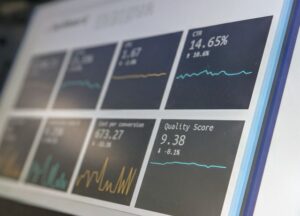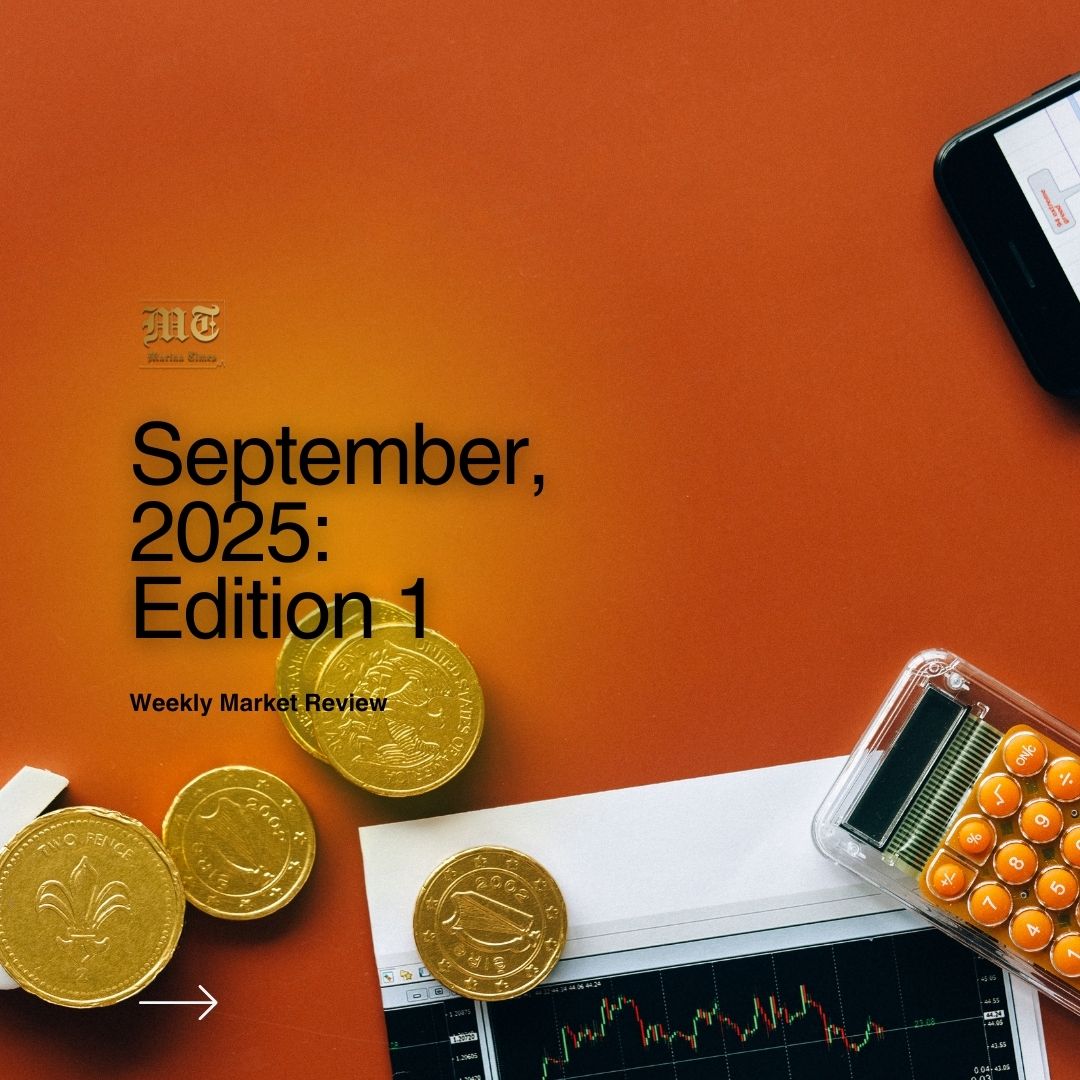

The interbank liquidity position opened with a surplus of over ₦1.40 trillion on Friday, closing out a highly liquid week. Money market rates moderated slightly, with the Open Repo Rate (OPR) and Overnight (O/N) peaking at 28.90% and 29.15%, respectively, before closing the week at 26.50% and 26.95% respectively.
The final week of August unfolded with a sharp repricing of Nigerian sovereign debt instruments, as the Debt Management Organisation (DMO) FGN bond auction on August 25th revealed higher bids in response to tightening macroeconomic headwinds. The new 5-year paper cleared at 17.945% while the 7-year re-issue settled at 18.00%, a significant jump from prior levels, signalling rising debt service risks and investor caution amid inflationary and fiscal strains. Complementing this, the CBN’s back-to-back OMO auctions on August 26th and 27th drew strong demand, with oversubscriptions of nearly 1.8x and 2.9x, respectively.
Across broader markets, sentiment remained cautious yet resilient. Equities wavered, with the All-Share Index slipping from 141,439.75 points at the beginning of the week to 140,295.00 points on Friday, as early gains were extracted by profit-taking and month-end rebalancing. Crude oil markets, swung on a cocktail of geopolitical shocks and demand concerns; Brent traded at $67/bbl and WTI at $64/bbl, after volatile moves sparked by geopolitical tensions on fresh U.S. tariff threats on India, and signs of slowing American fuel demand ahead of Labour Day. Even as Afreximbank’s reaffirmed A-/Stable rating bolstered Africa’s credit narrative and investor confidence, Nigeria’s markets closed the week on a watchful note, with elevated yields and external risks setting the tone for September.
In the FX market, the Naira traded between $/₦1,525.00 and $/₦1,539.50 during the week, closing at $/₦1,531.00 on Friday.
The outcome of the FGN bond auction held on August 25th showed a sharp repricing of sovereign risk as investors demanded higher yields amid tight macroeconomic pressures. The auction featured 2 tenors; a new 5-year (Aug 2030) bond that attracted modest interest with subscription slightly above the offer of ₦100bn, and the 7-year (Jun 2032) issuance which witnessed an oversubscription of 1.66x. The new paper closed at 17.945%, while the 7-year cleared at 18.00%, marking a significant increase of 210bps (13.2% rise) from its previous auction rate.
Despite total subscription of ₦268.16bn, only ₦136.16bn (a 1.34x bid to cover) was allotted, with the Debt Management Office curbing acceptance of high-yield bids to manage borrowing costs. The partial allotments signal government caution, but the steep rise in clearing rates underscores growing debt service pressure. In the views of many, persistent FX volatility and fiscal imbalances could impact yields, reinforcing a cautious but opportunistic stance in the medium term.
BONDS TENOR | AUGUST 2030 | JUNE 2032 |
AUCTION DATE | 25-08-2025 | 25-08-2025 |
SETTLEMENT DATE | 27-08-2025 | 27-08-2025 |
MATURITY DATE | 27-08-2030 | 25-06-2032 |
TENORS | 5-YEAR | 7-YEAR |
AMOUNT OFFERED (₦) | 100 BILLION | 100 BILLION |
SUBSCRIPTION (₦) | 102.355 BILLION | 165.807 BILLION |
AMOUNT ALLOTTED (₦) | 46.005 BILLION | 90.157 BILLION |
RANGE OF BIDS (%) | 12.5000 – 21.5000 | 15.0000 – 22.0000 |
STOP RATES (%) | 17.9450 | 18.0000 |
PREVIOUS STOP RATES (%) | NEW | 15.9000 |
Amid the CBN’s firm resolve to mop up liquidity and contain both inflationary and FX pressures, it held two OMO auctions simultaneously on August 26 & 27, 2025. Both auctions had a single tenor and offer of 84-day and 83-day bills, respectively. The results showed robust demand, with oversubscription of 1.77x and 2.87x against the offered amounts of ₦400.00 billion and ₦300.00 billion, respectively. The August 26 OMO auction closed at 26.4990%, a year-on-year uptick of 801bps, and a 99.9bps deviation from the previous close, with a short supply of about 87% of the offered amount. The subsequent OMO auction held on August 27 closed at 26.49% which is less than a 1bp drop (0.9bp) and a massive 280% allotment than was initially offered. This tightening suggests that after initial price discovery, the market quickly converged on a short-term benchmark near 26.5%, reflecting greater consensus on effective yields of 28.00% levels and alignment with the CBN’s active liquidity sterilization while anchoring short-term bill cost management.
TENOR | AUCTION DATE | OFFER (₦’ B) | BIDS (₦’ B) | RANGE OF BIDS (%) | STOP RATES (%) | PREVIOUS STOP RATES (%) | TOTAL SALE (₦’ B) |
84-DAY | 26-08-2025 | 400.00 | 710.96 | 25.3990-28.0000 | 26.4990 | 25.5000 | 349.46 |
83-DAY | 27-08-2025 | 300.00 | 860.00 | 26.2900-26.9800 | 26.4900 | 26.4990 | 842.50 |
The secondary market experienced minimal activity through the week, with rates trading at levels higher than 17% for the 2031s, 2032s, 2033s, and 16% levels for the 2053 bonds, evident of a limited appetite for duration. The newly issued 5-year bond drew minimal interest, with its allotment falling short of the offer average. There was pronounced activity on the longer dated NTB and OMO bills (7-Oct., 18-Nov., 16-Dec., 23-Dec., 6-Jan., 13-Jan., 20-Jan., 17-Mar., 7-Apr.). At the end of the week, offers outpaced bids across the curve, further reinforcing cautious sentiment. The week’s trading revealed a split investor base: some turned defensive against inflation and FX threats, while others tactically exploited yield dislocations, leaving price discovery uneven. Ultimately, OMOs dominated flows, reaffirming their role as the market’s preferred short-term play amid lingering macro uncertainties.
Afreximbank’s A-/Stable reaffirmation rating by Japans’ Credit Rating Agency sends a powerful signal of resilience and credibility that resonates across Nigeria’s capital market and fixed income space. It underscores Africa’s ability to maintain strong fundamentals and prudent risk management even in the face of global headwinds, while bolstering investor confidence in the region’s supra-nationals. The development not only enhances the attractiveness of African paper as a credible diversification play for fixed income investors but also provides a compelling template for tapping non-traditional funding avenues, as seen in Afreximbank’s successful Samurai bond debut. Ultimately, the affirmation strengthens Africa’s collective credit story and offers Nigeria an opportunity to leverage improved market sentiment in advancing its own debt and capital-raising strategies.
The Nigerian Exchange All-Share Index (ASI) closed the week on a bearish note, at 140,295.00 points on 29 August 2025 compared to 141,439.75 points on Monday. The market initially recorded an uptick of 322.25 points on Tuesday, before slipping 513.00 points on Wednesday. The bearish momentum deepened with a further 692.00 points loss on Thursday, followed by another 262.00 points drop on Friday. Overall, the week reflected a brief rally early on but was dominated by sustained declines in the latter half, reflecting investor caution and profit-taking pressures.
Crude oil markets ended the week mixed, with Brent settling around $67/bbl and WTI near $64/bbl, after a volatile stretch driven by both geopolitical shocks and shifting demand expectations. Prices started the week stronger, with Brent climbing from $68.65 on Monday to nearly $67.60 midweek, while WTI eased from $64.65 to $63.70 in the same period, as traders digested news of Ukrainian drone strikes on Russian refineries and export terminals alongside U.S. threats of fresh sanctions on Moscow. Additional volatility came from the White House’s move to double tariffs on Indian goods in response to its continued purchase of Russian crude, while expectations of a potential Fed rate cut in September briefly buoyed sentiment and increased demand. Still, the rally lost steam as the week progressed, with markets pressured by signs of softer U.S. fuel demand as the summer driving season nears its end, alongside the IEA’s warning of oversupply and OPEC+’s plans to restore idle capacity.
Geopolitical risks kept oil highly reactive, with traders closely monitoring the Russia-Ukraine conflict and India’s stance on U.S. pressure over its energy ties with Moscow. U.S. crude inventories posted a 2.39 million-barrel draw, with Cushing stockpiles also falling, but the bullish supply signal was overshadowed by concerns about waning consumption ahead of Labour Day. By Friday, Brent had slipped to $67.68 and WTI to $64.27, leaving both benchmarks on track for their first monthly decline in four months, even as they secured a second consecutive weekly gain. The balance between supply shocks, trade frictions, and monetary policy cues now sets the stage for crude’s next move, with sentiment hinging on whether demand can hold up in the face of rising global pressures.
Nigeria’s fixed-income market is set for over ₦3 trillion in inflows in September 2025 from OMOs, NTBs, and coupon payments; with about ₦780 billion expected this week from maturing bills, just ahead of a ₦480 billion NTB auction. The liquidity boost would drive strong demand, though the Central Bank may respond with OMO(s) to sterilize excess cash and keep short-term rates anchored. While robust inflows provide support, recent upward repricing on both bonds and NTBs highlights investors’ defensive stance, with higher yields demanded to offset inflationary pressure, elevated government borrowing, and persistent global headwinds from sticky U.S. yields, tighter financial conditions, and geopolitical risks. If the Monetary Policy Committee holds or eases interest rates, the short end should benefit from anchored demand, but mid- and long tenors are likely to remain elevated as the market prices in higher risk with return on investments, amidst the aggressive liquidity mop-up.
The 6-month ban on raw shea exports has been noted as another positive development for the country as the government strives to boost local production.
Oil, looking forward, may likely inch higher as global security tensions heighten. Cryptocurrency prices, despite efforts to pump-up, remain susceptible to significant downward pressures.
By: Sandra A. Aghaizu
The week opened with a whisper of hope, with the NGX All Share Index (ASI) rising gently like the morning sun on Tuesday.
But the light dimmed too soon.
By Wednesday, the ground gave way, points sliding like sand through tired hands.
Thursday deepened the fall, a heavy stumble that echoed through the market halls.
Friday’s drop was quieter, yet it sealed the story: a week that promised a climb, only to be weighed down by caution and the quiet hands of profit-takers.